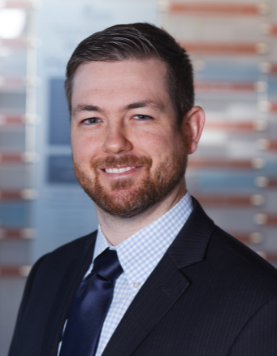10/30/24 blog post
when to be concerned about a flat head
in this article:
- What are the common causes of positional plagiocephaly?
- How can I prevent my child from developing positional plagiocephaly?
- How is positional plagiocephaly treated?
- When should I seek medical attention for my child?
Positional plagiocephaly, often known as “flat head syndrome,” is a common condition in infants. It happens when a baby’s head develops a flat spot due to prolonged pressure on one area. This can cause parents to worry. We asked pediatric neurosurgery physician assistant, Joseph Day, to help us understand how to prevent positional plagiocephaly and when to be concerned.
what are the common causes of positional plagiocephaly?
Positional plagiocephaly happens because a baby’s skull is soft and formable, allowing for easy shaping. This is an advantage for the birthing process but can lead to an uneven head shape if a baby consistently lays in the same position.
Common causes:
- Tight neck muscles (torticollis): If a baby has torticollis, they may have difficulty turning their head, which can result in a preference for one side.
- Sleeping position: Babies sleeping on their backs are more likely to develop a flat spot. This can also happen if they always turn their head to the same side.
- Limited tummy time: Tummy time helps strengthen neck muscles and allows the baby to develop the ability to move their head more freely.
- Preference for one side: Some babies naturally prefer looking to one side, which can lead to uneven pressure on the skull.
how can I prevent my child from developing positional plagiocephaly?
Preventing positional plagiocephaly is often straightforward and involves simple changes to daily routines:
- Encourage tummy time: Start tummy time early and aim for several short sessions throughout the day. This strengthens neck muscles and helps your baby learn to move their head more freely.
- Change head positions: Alternate your baby’s head position when putting them to sleep on their back. You can also switch the direction your baby faces in the crib to encourage them to look both ways.
- Hold your baby upright: Spend time holding your baby in an upright position to relieve pressure on the back of their head.
- Limit time in car seats, swings and bouncers: These devices can also contribute to flat spots by putting pressure on the same part of the head.
- Use special pillows with caution: There are specially designed pillows and mattresses that can help distribute pressure more evenly. However, these should only be used under the guidance of a healthcare professional, as some may pose safety risks.
how is positional plagiocephaly treated?
If preventive measures don’t improve the condition, treatment options may include:
- Repositioning techniques: Continue with repositioning strategies to encourage your baby to turn their head in different directions.
- Physical therapy: If torticollis is present, physical therapy can help loosen tight neck muscles, allowing the baby to move their head more freely.
- Helmet therapy: In more severe cases, a custom-fitted helmet may be recommended. Helmet therapy gently reshapes the baby’s skull over time by relieving pressure on the flattened areas. This is typically considered for babies between 3 to 12 months old when a skull is still malleable.
when should I seek medical attention for my child’s flat head?
While positional plagiocephaly is often mild and improves with simple interventions, there are times when a specialist evaluation is necessary:
- Severe asymmetry: If the flat spot is very pronounced and the head shape appears noticeably uneven, it’s best to consult a healthcare provider.
- Lack of improvement: If there’s little or no improvement after trying repositioning and increasing tummy time, a healthcare provider can assess whether further treatment is needed.
- Associated developmental concerns: If your baby isn’t meeting developmental milestones or you notice other issues like difficulty moving the neck, it’s important to seek medical advice.
- Parental concerns: Trust your instincts. If you’re worried about your baby’s head shape or development, consulting with your baby’s primary care provider or a specialist in neurosurgery can provide reassurance and guidance.

If you’re concerned about the severity of lack of improvement in your child’s flat head, seeking medical advice can ensure your baby’s healthy growth and development. Early intervention can make a significant difference, so don’t hesitate to reach out to your baby’s primary care provider or schedule an appointment in our neurosurgery clinic.
schedule an appointment
To schedule an appointment in our neurosurgery clinic, you can use online scheduling to find a date and time that works best for you.





